The 2023 NHL Draft is set to take place in Nashville, concluding an intense season of prospect evaluation. Led by standout player Connor Bedard, this draft class is considered exceptionally deep, especially in the first round. Although the draft order may change due to potential trades, the current order is established. The top two picks appear secure, but the subsequent selections are uncertain, resulting in an open field. Bedard, a center from Regina, is hailed as one of the best prospects in recent memory and is projected to be a franchise-altering player for the Chicago Blackhawks. Following Bedard, Adam Fantilli, Matvei Michkov, Leo Carlsson, and Will Smith are all highly regarded pro prospects. Michkov’s situation is intriguing since he has a KHL contract until 2025-26, making his draft placement uncertain. This year’s draft class is noteworthy for its emergence of four premium defensemen: David Reinbacher and Axel Sandin Pellikka. Additionally, the draft features a strong group of goaltenders, with Michael Hrabal standing out. The draft class has garnered significant attention due to its top talent, causing the drop-off in skill to occur later than usual. Notably, Connor Bedard is expected to begin his NHL journey with the Chicago Blackhawks, while other teams will seek to secure elite prospects. The draft is predicted to remain deep throughout the first two rounds, with numerous impressive players making their mark. Baring a trade (Don’t be surprised if Montreal moves up to #2****)

#1- Connor Bedard (Regina WHL)
Unless you have been living under a rock for the last 3 years you knew this day was coming and you knew when. You just didn’t know where he was going. Considering Connor Bedard’s physical attributes, it is unlikely that he will become a physically dominant player or excel in board battles. However, in a game that values skill over physicality, size becomes less crucial for a Hall of Fame career, as demonstrated by Patrick Kane. While Bedard shares some similarities with Kane, a more realistic projection of his potential combines attributes from current players like Auston Matthews, David Pastrnak, and Kane himself. Drawing inspiration from Marcel Dionne’s skill in the 70s and 80s, Bedard shows promising traits, despite not being the first overall pick like Dionne. Analyzing similar highly drafted players, a pattern emerges, indicating that Bedard could have a rookie season around 60 points and a sophomore campaign just below a point per game. By year three, as his physical development progresses, he is expected to reach his “typical” season, producing 86 to 110 points for 11 to 13 years before a slight decline. This trajectory positions him among the league’s elite. With an expected total of 140 points in his first two seasons and the majority of his prime years contributing to his stats, Bedard could potentially accumulate between 1400 and 1500 points, placing him in the realm of Hall of Fame numbers achieved by players like Patrick Kane and Sidney Crosby. However, it’s important to temper expectations and avoid comparing him directly to exceptional talents like Connor McDavid, as Bedard’s development may not follow the same path. While Bedard is an exciting prospect for Chicago, caution should be exercised in predicting his long-term success until there is a substantial sample size of his NHL performance.
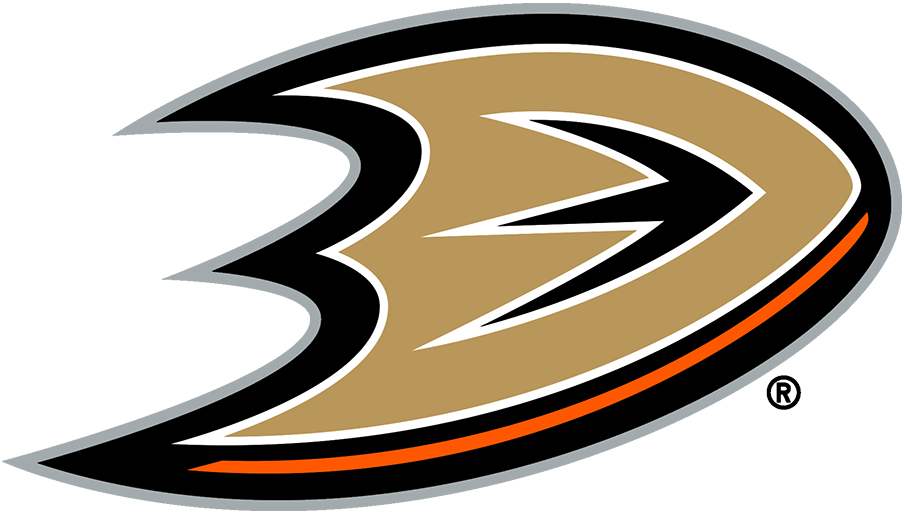
# 2- Adam Fantilli (Michigan NCAA)
I personally would take Michkov. But Fantilli is still a very very awesome pick. This is no knock on Fantilli who will have a great career, its just Michkov is the better player. Disney boys play it safe. Adam Fantilli, despite his exceptional skillset and performance in the NCAA, faces the unfortunate circumstance of being in the same draft class as a generational talent named Connor, similar to Jack Eichel’s situation with Connor McDavid in 2015. Fantilli has demonstrated his first-overall pick potential while playing with and against older players, showcasing his prowess as an 18-year-old. With 25 goals in 31 games, he has matched Paul Kariya’s college freshman record and could potentially rank among the top-five goal scorers in that category. While he may not reach Kariya’s 100 points in 39 games, he could approach the totals achieved by Eichel and Kyle Connor. With an impressive 1.80 points-per-game pace, Fantilli has the opportunity to break Eichel’s NCAA record. Scouts view him as an ideal top-line center, possessing size, speed, playmaking ability, hockey IQ, puckhandling, and an accurate shot. His exceptional skating, coupled with his other attributes, makes him a significant force in the NHL, potentially on par with Bedard in the future. Although he has areas for improvement, such as his defensive game and shot accuracy, these weaknesses can be addressed through development. Fantilli is widely projected to be the second overall pick, and his ongoing remarkable performance further solidifies his position. While another team may prioritize Leo Carlsson’s defensive abilities, Fantilli is unlikely to fall lower than the third overall pick. In any other year, he would be a strong contender for the first overall selection
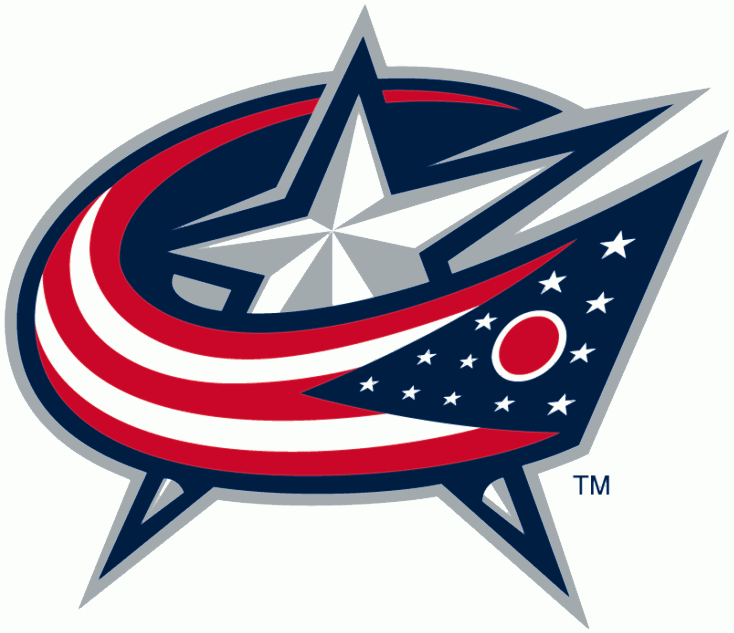
#3- Matvei Michkov (Sochi KHL)
Columbus isn’t playing the same game the Disney boys are playing and do the obvious smart thing and draft Michkov. The woke community is mad they drafted the Russian. They can wait the few years for him then Gaudreau can get a cup as he retires. But the again the Blue Jackets have a really slow management group. This is where Michkov should be but expect a drop. There are several factors contributing to the uncertainty surrounding Matvei Michkov, an exciting forward considered a wild card in the draft. Once projected to go second after Connor Bedard, his stock has recently fallen, possibly due to concerns about his KHL contract, which extends until 2026, and general skepticism about drafting Russian players. The Montreal Canadiens, among other teams, are hesitant due to his contract situation and uncertainty about his willingness to develop overseas. Michkov has also faced personal challenges, including the tragic death of his father. Despite these factors, Michkov’s talent is undeniable, with comparisons to Alex Ovechkin prior to the setbacks. While he may not be selected within the top five, he is still expected to go within the top ten picks. Demonstrating his abilities, Michkov performed well for HK Sochi in the KHL, despite the team’s overall struggles. His standout performance in the Hlinka/Gretzky Cup further showcased his skills. Michkov’s greatest asset is his impressive shot, characterized by a quick release and the ability to shoot through traffic. He also possesses strong stickhandling and the confidence to execute creative moves like a lacrosse-style goal. However, improvements are needed in his defensive play and backchecking. If Michkov falls to the eighth overall pick, the Washington Capitals are likely to select him, as they have previously shown a willingness to draft Russian players like Ivan Miroshnichenko. Michkov’s potential as a steal in the draft may increase the longer he remains undrafted.
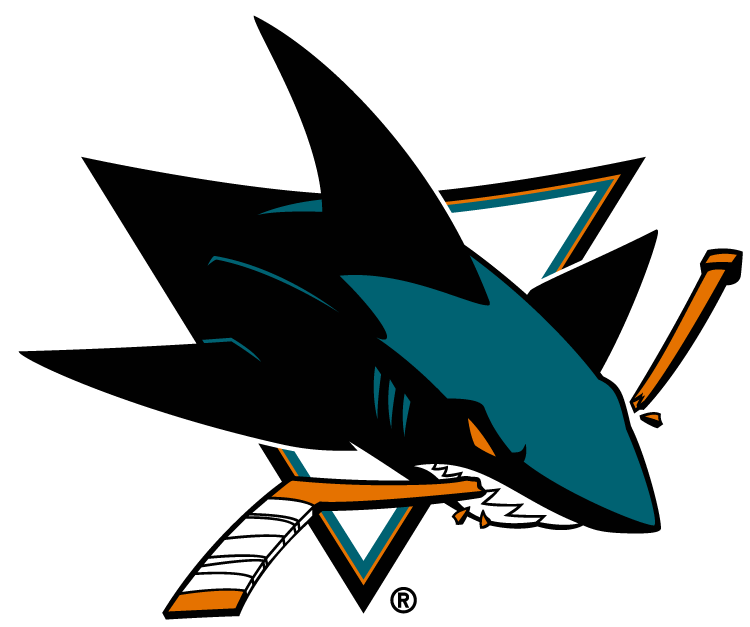
#4- Leo Carlsson (Orebro SEL)
This is where the draft will get interesting and funny. As new Sharks GM Mike Grier is shocked that Carlsson is still around. They would pass on Michkov but won’t on Carlsson. It the Blue Jackets don’t take Carlsson at 3 he goes to the Sharks. Rumor has it the Sharks really like American forward Will Smith but can’t pass. Carlsson had one of the best draft-eligible seasons in the SHL’s history and looks prime for a long career in the NHL. This pick could be Will Smith rumor has it Grier likes Smith also as Griers son went to school with him.

#5- Will Smith C (USNTDP)
The Montreal Canadiens select Will Smith. They will pick Smith or Leonard. Will Smith exhibits a dynamic offensive prowess as he takes the center position on the NTDP’s premier line this season. Notably, he showcases exceptional creativity in his offensive play while maintaining a reliable defensive presence. Within this year’s U18 team of the NTDP, the pool of top-tier draft prospects may be relatively limited, but Smith stands out as one of the four individuals widely regarded as first-round talents. A noteworthy attribute of Smith is his above-average skating ability, particularly in terms of maneuverability, granting him an advantage across all three zones of the game. His agility allows him to swiftly adapt defensive coverage and often outpace defenders during rushes at the junior level.

#6- David Reinbacher D (Kloten SWI)
Reinbacher should be the first defenceman taken in 2023. David Reinbacher’s reputation has been progressively soaring during the 2022-23 season, establishing him as the most NHL-ready defenseman poised for the upcoming draft. With a right-handed playing style and a robust physical build coveted by NHL general managers for their defenders, Reinbacher possesses the ideal attributes. Moreover, his game is imbued with an offensive flair that elevates him to the status of a formidable two-way threat. Notably, even as an 18-year-old in a men’s league, Reinbacher managed to accumulate an impressive 22 points in 46 games. A comparison with Roman Josi, who played in the same league during his draft year, highlights Reinbacher’s superior performance as Josi only tallied eight points in 35 games. Rumor also swirls around though that the Coyotes really want Ryan Leonard also.

#7- Ryan Leonard RW (USNTDP)
Ryan Leonard’s versatility and adaptability position him as a promising prospect in the talent-rich 2023 NHL Entry Draft. Excelling in multiple positions for the USNTDP, Leonard’s contributions extend to both defensive and offensive zones, showcasing his scoring prowess with impressive goal and point totals. As a dominant two-way forward, Leonard combines strong ice presence, disruptive defensive skills, and the ability to outmuscle opponents despite his average height. With a commitment to playing at Boston College, Leonard has a valuable opportunity to further develop his game before potentially making an early NHL debut.
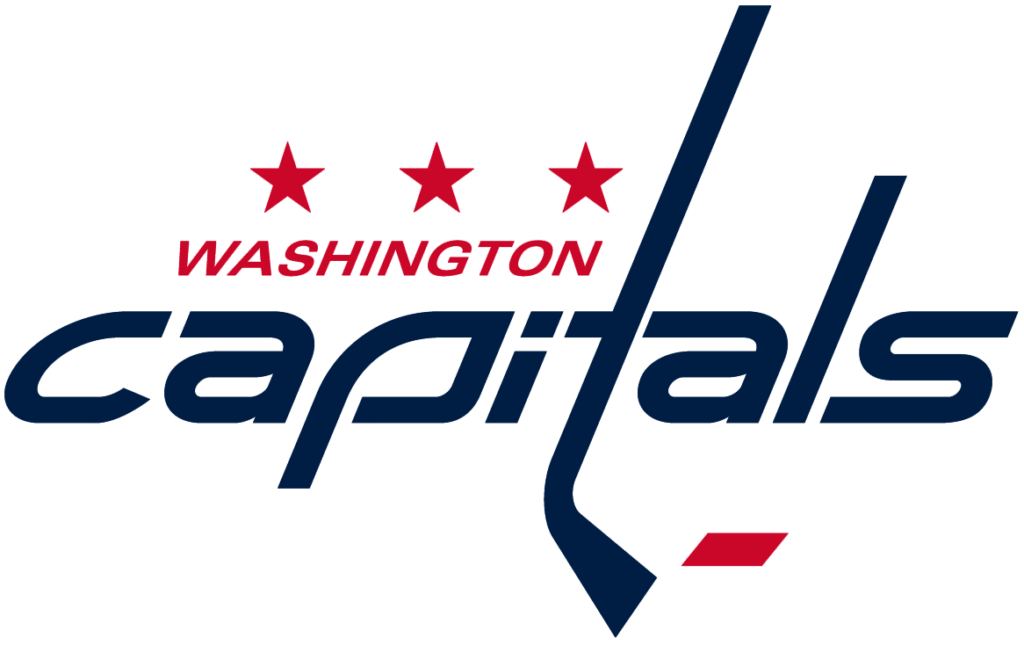
#8- Zach Benson LW (Winnipeg WHL)
Zach Benson stands as one of the most underrated forwards in the current draft class, having ranked second in scoring among draft-eligible players in the Western Hockey League, just behind the notable Connor Bedard. With an impressive record of 36 goals and 62 assists, totaling 98 points in 60 games, Benson’s performance surpasses that of many previous draft classes, making him a contender for the top spot. In terms of potential, he possesses the versatile qualities of Zach Hyman while also exhibiting the ceiling of a player like Mitch Marner. Depending on the development and utilization strategies employed by the team that selects him, either outcome is equally plausible. Notably, Benson’s exceptional edgework, reminiscent of Marner, showcases his agility and ability to evade pressure through skilled maneuvers rather than outright speed.
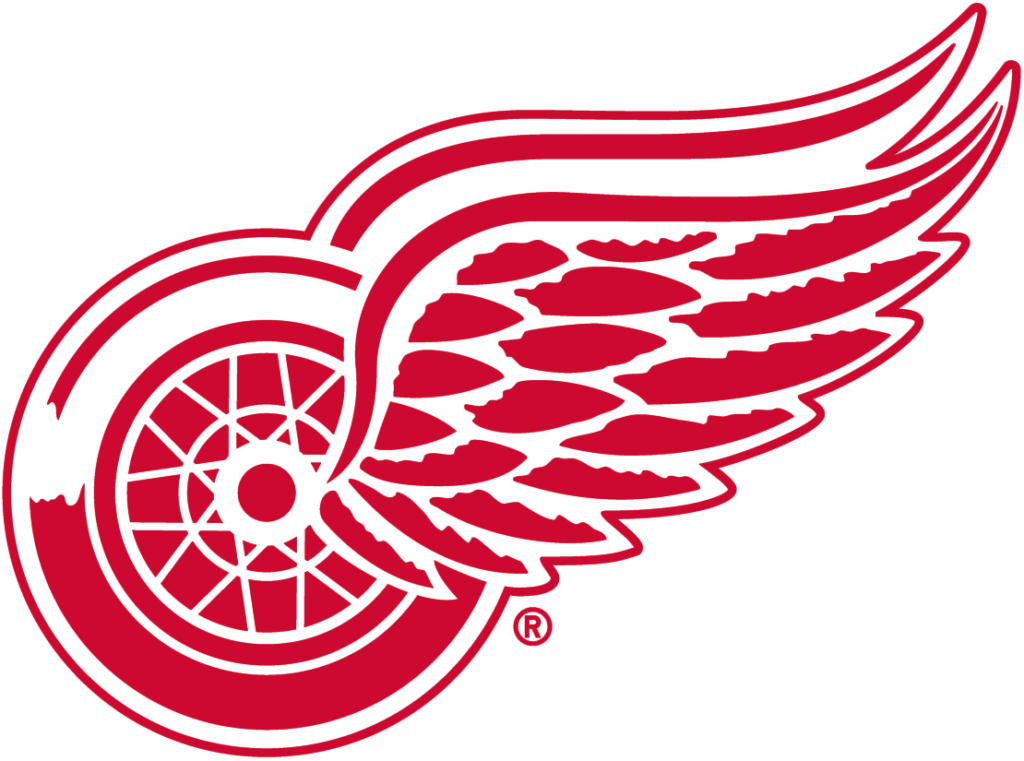
#9- Dalibor Dvorsky C (AIK SWE2)
This guys name alone looks like a Detroit Red Wing. Dalibor Dvorsky emerges as an exceptional center prospect, showcasing both a formidable shot and defensive instincts that hold the potential to make him a formidable two-way presence in the NHL in the future. Transitioning to the second-tier Swedish pro league HockeyAllsvenskan, Dvorsky has solidified his status as one of the top-10 prospects in the eyes of many evaluators, with the majority recognizing his talent within the top-16 range. Despite being a 17-year-old playing against seasoned professionals, Dvorsky has demonstrated effectiveness and showcased glimpses of his NHL potential. With 14 points in 36 games, he currently leads all U18 players in scoring within the Allsvenskan. Additionally, his dominant performance in 10 games for AIK’s J20 team in Sweden’s premier junior league, accumulating an impressive 21 points, further establishes his superiority even among older competitors.
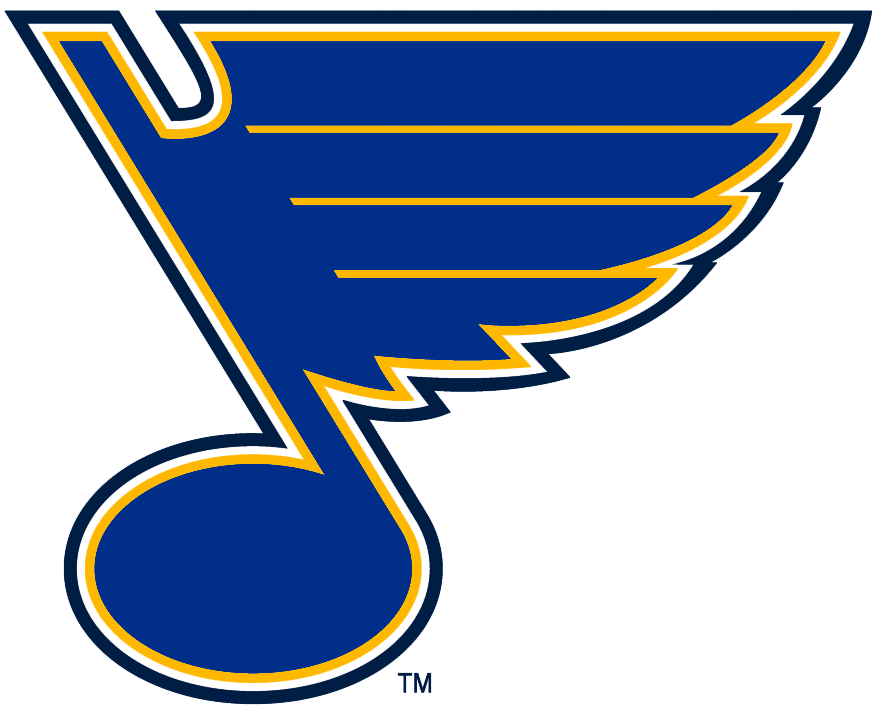
#10- Eduard Sale LW (Brno CZE)
Once considered a surefire top-five pick in the 2023 NHL draft, Eduard Sale (pronounced “Shah-lah” has handled his fair share of adversity this season. Sale is widely regarded as a prospect with the potential to become a top-line player in the NHL, making him a likely candidate for selection in the upper half of the first round in the upcoming draft. Having already competed in Czechia’s premier league for two seasons and representing Czechia’s U-18 international teams in consecutive years, Sale has garnered valuable experience at a high level. As a left-shot right winger, he possesses good size with room for physical development. While initially projected as a top-10 pick, his draft stock has somewhat declined, but he remains a high-caliber player expected to be chosen within the top 15 selections of the 2023 draft.
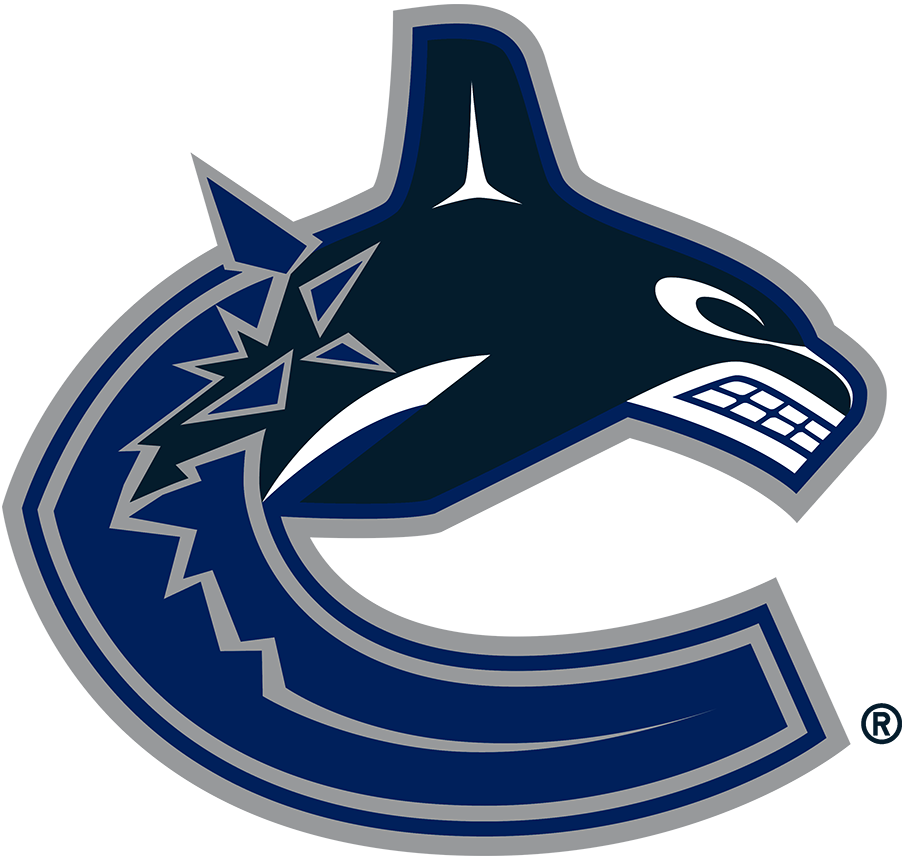
#11- Oliver Moore C (USNTDP)
Oliver Moore garners immediate recognition for his remarkable speed, distinguishing him within a highly competitive draft class teeming with skilled centers. Considered one of the swiftest prospects, Moore possesses the ability to swiftly reach top speeds, effortlessly overtaking opponents when given even the slightest opening. His exceptional velocity allows him to dictate the tempo of the game, a quality complemented by his remarkable agility. Displaying rapid reflexes and seamless changes in pace and direction, Moore ensures that, with possession of the puck, his team is consistently presented with scoring opportunities. However, Moore’s prowess extends beyond his speed; he boasts a blistering shot characterized by a swift release. Evidenced by his impressive tally of 26 goals this season with the United States U18 Development Program, ranking fourth on a highly skilled team, alongside an additional eight goals with the USNDP Juniors in the United States Hockey League (USHL), Moore is poised to achieve comparable milestones to notable figures like Trevor Zegras and Clayton Keller during their time in the program.

#12- Gabe Perreault RW (USNTDP)
Gabe Perreault, the son of NHL veteran Yanic Perreault, is a highly skilled and intelligent winger known for his offensive prowess. With a pass-first approach, Perreault possesses exceptional playmaking abilities, vision, and creativity in stickhandling. His ability to make quick, smart decisions on the ice contributes to his effectiveness in the offensive zone. Perreault’s role as a power play asset is highlighted by his adeptness in distributing the puck and positioning himself strategically around the net for scoring opportunities. With his remarkable skill set and goal-scoring mindset, Perreault is a formidable playmaker with the potential to make a significant impact at the professional level

#13- Brayden Yager C (Moose Jaw WHL)
Like Dvorsky as Red Wing a big reason I think Yager will go to Buffalo minus is skill is he looks suited to be a Sabre. Brayden Yager is widely recognized as a first-round caliber prospect in the 2023 draft, although opinions differ regarding the extent of his potential and his placement within the draft order. The abundance of quality prospects in this year’s class adds complexity to evaluating Yager’s overall standing. A notable aspect of Yager’s game is his impressive shot, coupled with his assertiveness in utilizing it. Demonstrating a swift release and remarkable accuracy, he has amassed an impressive tally of 60 goals over his past two seasons in the Western Hockey League (WHL). While not reaching the level of elite goal-scorers, his shot possesses sufficient danger to potentially develop into a 30-goal scorer at the NHL level. As a top-six center for the Moose Jaw Warriors, Yager adeptly involves his teammates in the offensive play. Although he may not possess the utmost creativity among the draft prospects, his ability to identify straightforward plays that maintain possession and create scoring opportunities is commendable. In essence, Yager excels as a finisher, while still showcasing the capability to contribute as a key component of well-executed passing plays.

#14- Andrew Cristall LW (Kelowna WHL)
Amidst a draft replete with an array of highly acclaimed talents, it is not uncommon for certain players to evade widespread recognition. Andrew Cristall emerges as one such name in the illustrious 2023 NHL Draft, despite his commendable performance for the Kelowna Rockets. Across 54 games, Cristall exhibited remarkable proficiency by netting 39 goals and facilitating 56 assists, amassing a notable total of 95 points. His scoring prowess positioned him as the fourth highest point scorer among draft-eligible players in the WHL, with an even more impressive points-per-game ratio, second only to the renowned Connor Bedard. Moreover, on the international stage, Cristall delivered a commendable performance during the recent IIHF Men’s U18 Championship, contributing six points across seven games, even though Canada attained a bronze medal in the tournament. Considering his skill set, Cristall has emerged as a steadily ascending prospect, despite concerns surrounding his susceptibility to injuries, particularly following a lower-body ailment that sidelined him for a portion of the season

#15- Axel Sandin Pellikka D (AIK SWE)
Axel Sandin Pellikka emerges as one of the most astutely skilled offensive defensemen in the 2023 Draft. Exhibiting a remarkable offensive IQ, coupled with deft puck-moving abilities, he showcases unrivaled command along the offensive blue line among this year’s cohort of defensemen. Sandin Pellikka’s exceptional performance in the J20 Nationell Swedish Junior League this past season, accumulating 36 points in 31 games, firmly establishes him as a first-round talent. Furthermore, his participation in Swedish Hockey League (SHL) competition, amassing two goals and three assists in 22 games, demonstrates his readiness for higher levels of play. Currently representing Team Sweden at the 2023 World U18 Championship, Sandin Pellikka’s stature and lack of physical strength are often cited as his primary limitations. However, he compensates through proficient edge work and adeptly maneuvering his way out of challenging situations. With the potential to further enhance his strength as he matures, Sandin Pellikka’s intelligent passing, mobility, and prowess in carrying the puck compensate for any deficiencies he may possess.

#16- Colby Barlow LW (Owen Sound OHL)
Barlow has displayed an exceptionally impressive performance during the 2022-23 season, assuming the role of captain for the Attack. His notable contribution of 46 goals encompasses nearly 20% of the team’s overall scoring output. Furthermore, Barlow has showcased his evolving playmaking skills, nearly doubling his assist tally compared to his rookie season. It is worth mentioning his recent triumph at the Hlinka/Gretzky tournament. Despite being one of the most prolific young goal scorers in the world, Barlow has surprisingly garnered less attention within the industry. However, I find it difficult to comprehend such hesitations. While there are areas in his game that require refinement, Barlow’s exceptional ability to finish ranks among the finest in the draft class. His imminent achievement of the 50-goal milestone in his draft year is a testament to his capability to find open spaces on the ice, both for himself and his teammates. Notably, he demonstrates his aptitude to convert scoring opportunities from various areas of the rink, whether in close proximity to the net or from longer distances, showcasing his skill and accuracy.

#17- Matthew Wood RW (Connecticut NCAA)
Matthew Wood’s rise as a highly regarded prospect for the 2023 NHL Draft began with his outstanding performance in the BCHL, where he scored 45 goals and 85 points in just 46 games. As the league’s top scorer and Rookie of the Year, Wood’s decision to pursue college hockey after rejecting offers from other teams showcases his ambition. Standing at 6-foot-4 and armed with soft hands and a lethal wrist shot, Wood’s size and skillset have captured the attention of scouts. His consistent presence on the shot clock and willingness to unleash his shot demonstrate his scoring prowess

#18- Reilly Heidt C (Prince George WHL)
Riley Heidt emerges as a highly sought-after prospect in this year’s draft, particularly for teams in need of a dynamic and disruptive playmaking center. The Prince George Cougars forward has displayed significant growth this season, positioning himself as a projected top-20 selection. With remarkable speed, exceptional playmaking abilities, and a relentless presence in the forecheck, Heidt possesses the potential to alter the course of a game each time he takes the ice. His puck-handling skills make him an imposing threat in the Western Hockey League (WHL), evident in his league-leading 72 assists, matching Connor Bedard’s tally, and his 39 power-play assists. Additionally, Heidt exhibits a fearless approach, frequently directing pucks towards the net, amassing 25 goals on 170 shots across 68 regular-season games. A key factor behind his impressive point production lies in his constant movement, both with and without the puck. Whether drawing defenders to create openings for teammates or positioning himself optimally to receive a pass, Heidt’s ability to adapt to the fast-paced professional game, where time and space are limited, bodes well for his future success.

#19- Mikhail Gulyayev D (Omsk MHL)
While Matvei Michkov from HK Sochi is expected to be the first Russian player chosen in the upcoming NHL draft, it would be unwise to overlook the potential of Mikhail Gulyayev. Gulyayev, a highly skilled two-way defenseman, possesses a wide range of attributes that position him as a top contender for the title of the best defenseman in the 2023 NHL draft. His ability to seamlessly transition between a composed defensive game and an explosive offensive presence establishes him as a reliable and versatile defender. Gulyayev’s comprehensive skill set allows him to excel in various situations, including power play and penalty kill, while particularly thriving during even-strength play. His consistent outstanding performances in the KHL and continuous improvement year after year make him a dependable draft pick for the upcoming NHL entry draft. Although his contract keeps him in Europe until 2025, it is evident that he will be prepared to assume significant minutes in the NHL’s top four defensive lineup upon his arrival. From my perspective, Gulyayev stands as the premier defenseman in the 2023 NHL draft, a position unlikely to be challenged. His dominant displays in the MHL highlight his potential for seamless adaptation to the professional leagues in Russia, further solidifying his status as a future force to be reckoned with.
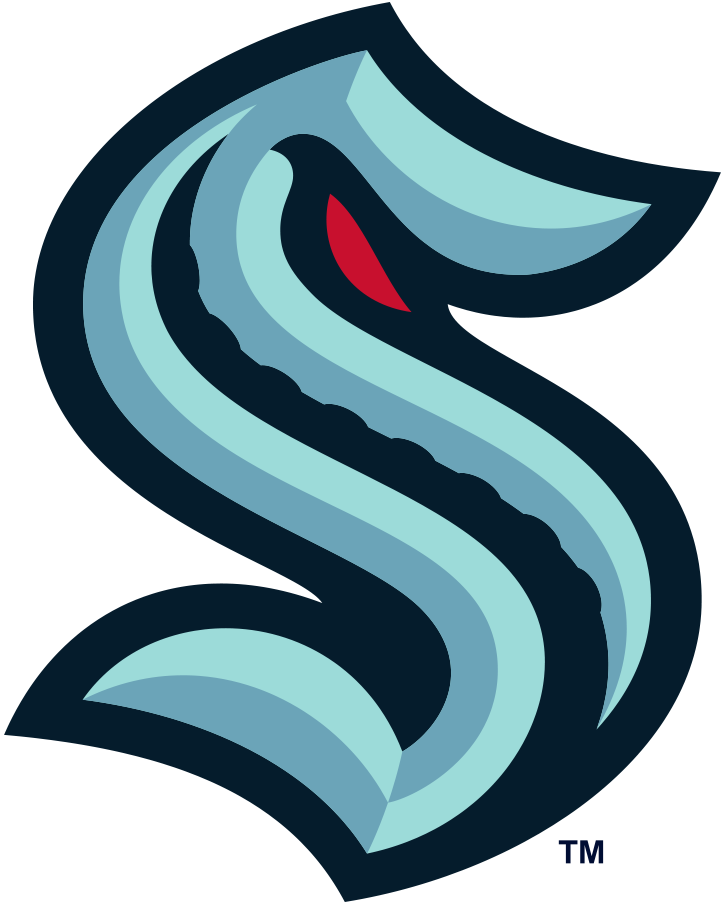
#20- Quentin Musty LW (Sudbury OHL)
Musty, the former first overall selection in the 2021 OHL Priority Selection, has emerged as a highly debated and polarizing prospect in the context of the 2023 NHL Draft. Undoubtedly, his exceptional skill level and significant potential for success in the NHL cannot be disregarded. Nevertheless, concerns surrounding his consistency in off-puck play and overall level of engagement have resulted in inconsistent rankings by scouting organizations. In many aspects, Musty’s draft profile mirrors that of Arthur Kaliyev, a former Hamilton Bulldog and current forward for the Los Angeles Kings. Assessing Musty’s future projection and potential, there is no doubt that he possesses the skill set to thrive as a top-six forward on a scoring line in the NHL. His offensive capabilities, encompassing skill, creativity, shot accuracy, and vision, all surpass average standards, explaining his current placement within the top ten in points per game scoring in the OHL. However, there is ample room for improvement in terms of consistency in physical engagement, effort and awareness in all three zones, and explosiveness as a skater. The NHL team that selects him will need to exercise patience, allowing Musty to complete four years in the OHL before progressing to the professional level. It is worth noting that extended development time is often required for power forwards chosen outside the top ten.
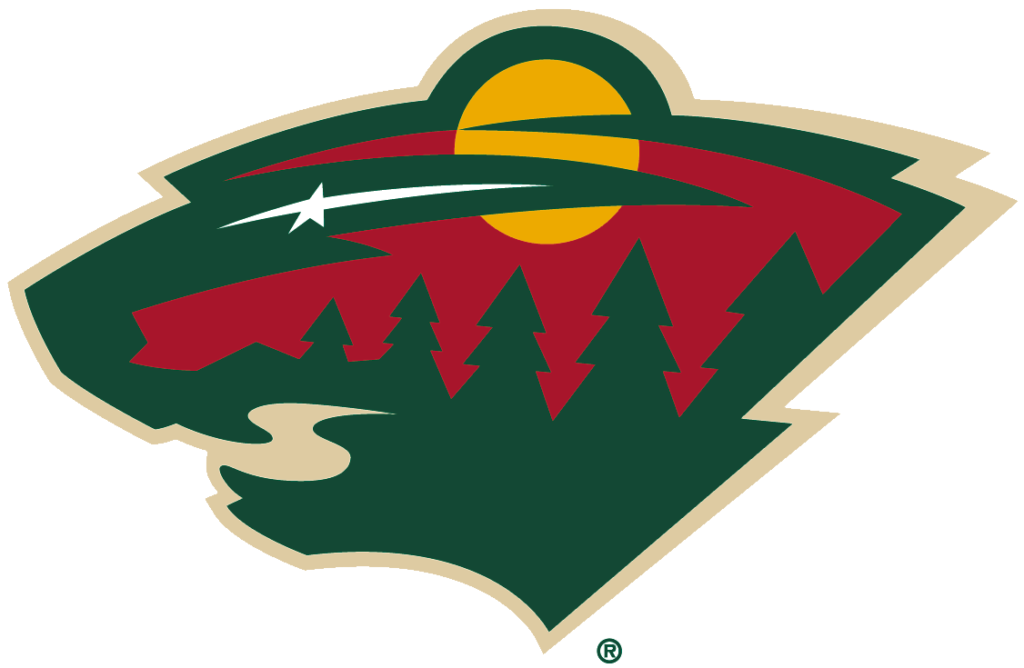
#21- Calum Ritchie C (Oshawa OHL)
Calum Ritchie has emerged as a highly promising prospect for the 2023 NHL Draft, showcasing his skilled offensive abilities, top-tier hockey IQ, and pro-sized frame. With silky-smooth stickwork, he maneuvers through crowds and creates scoring opportunities, displaying a penchant for finishing plays or setting up teammates. While unselfish with the puck, his offensive consistency and assertiveness have been questioned. Nonetheless, Ritchie’s overall game is strong, exhibiting sound defensive play, penalty-killing contributions, and coachability. Although his skating and speed have room for improvement, his mobility complements his skill set. The key to his professional success lies in maintaining steady offensive production

#22- Gavin Brindley C (Michigan NCAA)
Gavin Brindley has become a subject of polarized opinions in this year’s draft, as his skill and tenacity are viewed as valuable assets by some, while others question his lack of size. Standing at 5-foot-9, significantly shorter than his teammate Adam Fantilli, Brindley’s stature is not seen as an advantage in the NHL. However, one undeniable similarity between the two players is their ability to carry the puck with speed and dynamism. Brindley compensates for his size through various facets of his game, excelling in puck battles, physicality, and exhibiting a remarkable compete level. His agility and speed allow him to exploit opponents’ weaknesses both offensively and while forechecking. Brindley’s relentless movement and energy on the ice are noteworthy, as he confidently charges the middle and protects the puck effectively. As a freshman for the University of Michigan, he has showcased his versatility by playing across the lineup and earning significant trust from his team. While many smaller players rely solely on skill, Brindley’s skating, energy, and tenacity make him a potential top-six contributor with offensive prowess and a reliable two-way game. Despite some early-season misfortune, Brindley’s performance surged following his participation in the World Junior Championship, leading to an impressive scoring spree during the final two months of the season. Finishing the regular season with 36 points in 38 games, he ranked fourth on the team, trailing only elite NHL prospects Luke Hughes and Fantilli. Brindley’s strong finish, accumulating 14 points in his last 10 games, sets him apart as one of the top-scoring freshmen in the NCAA, second only to Fantilli in rookie scoring.

#23- Otto Stenberg C (Frolunda SEL)
Despite not excelling in a single aspect of the game, Stenberg demonstrates a strong all-around performance. His ability to win puck battles and anticipate the flow of the game allows him to outmaneuver opposing defenders. Despite his size, he plays with a physicality that makes him a constant threat. Moreover, his positional versatility enhances his impact on all areas of the game. Stenberg fearlessly engages defenders both on and off the puck, enabling him to penetrate the offensive zone effectively. While his defensive skills may not be the most prominent aspect of his game, his transitional play proves invaluable in his defensive responsibilities. Stenberg exhibits impressive puck-carrying skills and excels as a possession player. However, he has yet to achieve consistent performance against tougher competition, as evident from his time with Frölunda in the SHL this season. Despite this, his potential is far greater than what he has displayed against more challenging opponents thus far. Additionally, Stenberg’s willingness to acknowledge the contributions of his teammates adds to his value as a solid first-round candidate for teams selecting midway through the opening round of the 2023 NHL Draft.

#24-Daniil But LW (Yaroslavl MHL)
Daniil But is a polarizing prospect in the 2023 NHL Draft, with varying opinions on his potential. Standing at 6-foot-5, he possesses desirable size and exhibits impressive puck skills and shooting mechanics. However, his skating needs improvement, which may impact his full potential in the NHL. But’s powerful shot and ability to manipulate angles make him a formidable offensive threat, while his physical game and speed contribute to his effectiveness on the ice. He has shown promise in the MHL and earned a call-up to a KHL team. Evaluating But’s potential remains subjective, but his unique combination of size and skill suggests he is a worthy investment for an NHL team, likely in the first round.

#25- Bradly Nadeau LW (Penticton BCHL)
Bradly Nadeau is poised to emerge as a late riser on draft boards due to his impressive end-of-season performance. Playing in the British Columbia Hockey League (BCHL), Nadeau initially garnered little attention despite his impressive point production as a 16-year-old. However, this changed as he dominated the league, leading in goals, assists, and points. Nadeau’s well-rounded game shines through, particularly in his exceptional speed and powerful shot, which make him one of the top shooters in the 2023 Draft. His agility and ability to find open space complement his on-puck presence, making him a threat on the rush. Additionally, his defensive skills are commendable due to his speed and relentless work ethic. The primary factor holding Nadeau back from being considered a top-20 pick is his height of 5-foot-10, but his success in the BCHL suggests otherwise. Despite taking an alternative route to the NCAA, Nadeau’s outstanding point production showcases his potential. With his remarkable scoring ability and rising status throughout the season, Nadeau is likely to be a first-round selection, possibly even earlier than expected.

#26- Lukas Dragicevic D (Tri-City WHL)
Lukas Dragicevic, the top-ranked North American defensive prospect for the 2023 NHL Entry Draft, possesses the qualities teams seek in a modern defenseman. Known for his reliability in the defensive zone, smooth puck transitions, and power play skills, Dragicevic impressively adapted to the position after switching full-time in 2020. His standout passing ability and strong skating make him a dangerous player in the transition game and offensive zone. While he takes risks and needs to improve defensively, his offensive skills make him a first-round prospect. However, concerns about his defensive play may lead to his selection in the second round.

#27- Adam Gajan G (Chippewa NAHL)
Adam Gajan’s exceptional performance for Slovakia at the 2023 World Junior Championships, where he pushed Canada to overtime, has significantly boosted his draft stock. Initially considered a late-round prospect, his standout display in the gold medal game has elevated him to one of the top goaltenders in contention. Gajan began the year as the starting goalie for the NAHL’s Chippewa Steel before joining the USHL’s Green Bay Gamblers, where he remains undefeated after two games with an impressive save percentage of .961. He has also announced his commitment to play NCAA Division I hockey for the University of Minnesota-Duluth next season. Standing at 6’4″ with a commanding presence, long legs, and superb reflexes, Gajan excels at covering the net and never gives up on plays. His strong positioning, anticipation, and puck-handling abilities make him a formidable goaltender. With his size, athleticism, and technique, Gajan has the potential to become an NHL starter, although further development may be required. Drawing a comparison to Sergei Bobrovsky, both goaltenders possess a similar playstyle characterized by their size and ability to steal games. Currently projected as a second-round pick, Gajan’s draft position could fluctuate depending on team needs, potentially resulting in a higher selection than initially anticipated.

#28- Charlie Stramel C (Wisonsin NCAA)
Charlie Stramel presents an enticing package of size and speed that will appeal to teams in the draft. Standing at 6-foot-3 and 216 pounds, he possesses NHL-ready physicality and can adapt his playstyle to either a grinding or skill-oriented game. Despite being a freshman in the NCAA with the University of Wisconsin, Stramel demonstrates notable strength and size advantage against older opponents. While some inconsistency in his play this season has caused a decline in his draft stock, his skating, although not elite, remains commendable for a player of his size. Enhancements in mobility and explosiveness will enable him to compete more effectively against quicker opponents. Offensively, Stramel’s size poses significant challenges for defenders, and his versatility allows him to contribute in various ways. His power-forward style, combined with his comfort in front of the net, makes him a formidable presence during power plays and at even strength. Although his playmaking skills are a work in progress, his ability to sustain offensive pressure and utilize his speed and positioning are assets. Defensively, Stramel’s physicality is noteworthy, as he disrupts opponents with hits and employs his long reach to limit their options. His strong hockey IQ and anticipation contribute to his effectiveness in defensive situations. Despite his modest offensive numbers, Stramel’s value transcends statistics, given his rare combination of size and skill. With the draft class predominantly featuring smaller, speedy forwards, Stramel’s unique attributes make him an appealing late first-round selection. Nevertheless, further refinement of his game will be necessary before making the transition to the NHL.

#29- Tanner Molendyk D (Saskatoon WHL)
Despite the abundance of talented forwards in the 2023 draft class, the scarcity of clear-cut first-round defenseman prospects is notable. Tanner Molendyk, an offensively skilled blueliner from the Saskatoon Blades in the Western Hockey League (WHL), aims to be among the names called on the first day. Standing at 5-foot-11, he recorded nine goals and 37 points in 67 games, placing third in scoring among his team’s defensemen. While these numbers may not match those of high-scoring offensive defensemen like Lukas Dragicevic, who registered 15 goals and 75 points, Molendyk’s lower production has raised concerns as the season progressed, resulting in his slip to the second round in many draft rankings. However, Molendyk’s ability as a two-way defenseman is a key factor in his evaluation. He showcases exceptional skating skills, effortlessly gliding across the ice while maintaining speed and agility with the puck. His confident and patient approach to the transition game ensures he is seldom caught off guard. Additionally, Molendyk possesses a potent and accurate point shot, posing a constant threat in the offensive zone. Although his offensive production has been underwhelming for a player expected to contribute offensively, the lack of elite defensemen available in the draft may afford him further consideration from teams with weaker defensive pipelines, particularly those possessing multiple first-round selections.

#30- Nate Danielson C (Brandon WHL)
Nate Danielson, a highly skilled and intelligent center, has proven himself as the top offensive threat on a struggling Brandon Wheat Kings team. With 32 goals and 76 points in 63 games, he ranks among the top first-year draft-eligible players in the WHL. Despite taking relatively few shots, Danielson showcases his patience and waits for prime scoring opportunities, displaying his ability to create scoring chances. He excels as a playmaker, utilizing his puck-carrying skills to draw in opponents and make precise passes to set up teammates for scoring chances. Danielson’s exceptional speed and agility make him one of the best skaters in the 2023 Draft class, allowing him to generate momentum and change directions effortlessly. Defensively, his intelligence shines as he consistently reads the game, identifies weaknesses, and reacts quickly to capitalize on opportunities. While Danielson may lack the standout dynamic ability of some top-ranked centers in the draft, he is a well-rounded and adaptable player with no major weaknesses. Due to the depth of elite centers in the draft, Danielson is projected to be selected between picks 20-30, making him a safe and promising pick with the skills necessary for a smooth. transition to the professional level

#31- Oliver Bonk D (London OHL)
Oliver Bonk, a promising two-way defenseman and the son of former NHL player Radek Bonk, has emerged as one of the top prospects in his draft class. With strong defensive skills and mobility, the Ottawa native is projected to be a late first-round pick. Bonk excels in all areas of the ice, displaying confidence in his abilities. Despite his average size at 6-foot-1, he effectively utilizes his physicality in board battles and showcases excellent puck retrieval skills. Bonk’s transition game is impressive, as he quickly makes crisp passes or carries the puck up the ice himself. Although his point production may not be exceptional, his offensive potential is evident through his smart passes and strong shot from the blue line, as well as his ability to set up plays during transitions. While he may not possess elite speed, Bonk compensates with strong edgework and proficient stick-checking to shut down opposing rushes. As a trusted defenseman in all situations, he logs significant ice time. With his skill set already at a high level, Bonk is expected to continue developing, likely returning to the London Knights for the upcoming season. However, he may have the opportunity to compete for a roster spot during training camp, depending on the team that drafts him. Bonk’s well-rounded game and lack of major weaknesses make him a safe bet as a future top-four defenseman. His impressive performance this season has caused him to rise in mock drafts, and he could potentially be selected higher than expected, particularly by teams with multiple first-round picks in need of a versatile defenseman in the early 20s of the draft.

#32- Jayden Perron RW (Chicago USHL)
Despite potentially being overshadowed in a stacked draft class, Perron has had an impressive draft year, leading his team in assists and ranking third in overall scoring. His offensive skills are highly valued by teams, as he demonstrates exceptional hockey IQ, smooth playmaking abilities, and deceptive puck-handling skills. Perron excels at controlling the pace of play and finding passing lanes, showcasing creativity and versatility in high-pressure situations. His agility, speed, and strong edgework make him a challenging player to contain in both the rush and offensive zone. While his smaller stature necessitates some strength development, Perron compensates with puck protection and effective positioning on the defensive end. Despite varying opinions on his draft position, Perron’s upside and impact in the USHL suggest that he deserves more recognition. With the potential to be a late-first or early second-round pick, he could potentially rise and become an excellent selection within the 17-25 range.